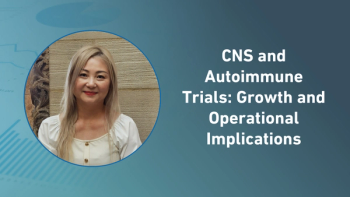
- Applied Clinical Trials-02-01-2023
- Volume 32
- Issue 1/2
The Benefits and Limitations of Clinical Data Platforms
Considerations to help tailor new tools as part of a custom clinical trial strategy.
Innovation in feasibility tools and data platforms has opened doors to new possibilities for clinical trial design and management. However, amid an increasingly complex data and therapeutic landscape, understanding how to apply these tools based on the specific needs and requirements of each trial can be a daunting task.
Combining the right data-driven resources and operational expertise will help sponsors and clinical trial teams ensure the most comprehensive, effective approach for their clinical trials. This article provides an overview of the key benefits and limitations of common data tools along with some additional considerations to help get clinical studies off on the right foot.
Factors for feasibility
To many, the thought of clinical trial feasibility brings to mind potential site and investigator candidates, and with good reason—selecting the right sites is arguably the most important aspect of the feasibility efforts for any given trial. However, the path to optimal site selection has grown increasingly complex over time due to both the nuanced requirements of clinical trials as well as the variety of clinical data platforms available. The medical technology landscape also plays as role in facilitating this evolution as it has become the backbone for treatments in many therapeutic areas.
In the current environment, the ability to pre-identify sites and investigators that have access to likely eligible patients is a granular aspect of the feasibility process. Fewer therapies operate as a “catch-all” for patients with a specific disease. Rather, with the development of gene, cell, and other biologically-oriented therapies, the idea of personalized or “precision” medicine is becoming more prevalent within clinical research. This has led to patients being sought out for clinical studies not only for exhibiting a target indication, but also for being characterized by a particular biomarker or genetic status.
Notably, as the ubiquity of clinical trial data becomes more widespread, study designs and medical technology should become more refined. Biologically-oriented therapies will become even more commonplace than they are today as a result. In this era of precision medicine, the idea of “patient centricity” itself should be expected to evolve. The availability of patient-level biomarker data will strongly influence this, as the paradigm shifts from patients seeking trials to more trials seeking patients, and more specifically based upon therapies tailored to their specific biological state.
In addition to the evolving industry dynamic, there are a variety of general overarching elements that sponsors and clinical trial teams need to be aware of—many of which should also be considered before initial conversations with a potential investigator. Global epidemiology, as well as country- and region-specific standards of care, are very important in ensuring that trial teams have optimal access to the targeted patient population. For example, many different forms of gastric cancer are dramatically more prevalent in eastern Asian countries relative to North America and western Europe. However, the types of treatments used for these patients can differ from country to country within this region. Therefore, if patient eligibility will be driven by a specific treatment history (which is often the case), selecting the countries in which patients will be most likely to receive this treatment is crucial to the success of the study.
At the site level, a variety of factors weigh into deciphering the ideal “site profile” for a given trial, inclusive of the competitive environment, infrastructure, equipment, and investigator specialty. Along with access to the necessary patient population and the start-up environment, these factors will ultimately drive site selection. While it is standard practice as a part of the site feasibility process to gauge these criteria, it is important to develop a strategy to determine the suitability of a candidate study center before sending questionnaires to potential investigators. Doing so will increase the efficiency of the overall feasibility process—saving time, money, and resources for both a study sponsor and the clinical support team.
Gaining an understanding of the landscape for a planned clinical study that is inclusive of the factors noted is critical for ensuring a trial’s success. This can prove to be a challenging process, especially considering the growing number of data platforms that have emerged in recent years for comparing criteria and planning clinical studies. From tools that mine information from historical and planned studies to those that source and compile de-identified patient electronic medical records (EMRs), there are many options available to help gather insights and aid in devising a data-driven strategy for a clinical trial.
Data platforms: from micro to macro
While many niche data platforms exist within the realm of clinical science, the planning and execution of clinical trials has arguably been most impacted by the development and refinement of two types of platforms: those that compile clinical trial data across multiple sources and those that provide patient-level EMR data from sites and investigators. When strategically integrated, these can inform competitive landscape assessments, country selection, enrollment expectations, and site selection.
- Trial data platforms: Data platforms such as Citeline, TrialHub and GlobalData—which allow trial teams to compile current and historical trial data—have become critical for conducting landscape assessments when planning a clinical study. By integrating records from multiple sources of trial information (e.g., publications, press releases, conference abstracts, ClinicalTrials.gov, other region- and country-specific trial registries), these platforms are invaluable for understanding the therapeutic landscape of a target indication. Furthermore, both historic and ongoing trials can be searched according to several different criteria, including but not limited to the country/site of operation, class of intervention, drug mechanism of action, line of therapy, eligibility criteria, and primary endpoints. These platforms help paint a clearer picture of what a study might look like, from the competitive landscape and most optimal countries/regions down to the individual investigator that would be the strongest candidate for inclusion—all without needing to send an e-mail to a single study coordinator.
- EMR platforms: Database platforms like TriNetX offer a more granular approach to feasibility based upon real-world data captured from potential study subjects. At the site level, the tools can allow for the pre-identification of patients based upon identifiers such as diagnostic codes (e.g., ICD9, ICD-10), procedural codes (e.g., CPT®), medical laboratory assessments, and genomics information. By leveraging patient-level data, the best site candidates can be pre-identified based upon those with the highest likelihood to have protocol-eligible patients, further strengthening the study’s recruitment potential. On top of this capability, these EMR sources can even inform protocol design by demonstrating the impact of adding/removing eligibility criteria on the potential patient pool.
As the ability to obtain patient-level data continues to increase—with organizations acquiring higher volumes of data from a larger number of hospital systems—there is potential for a dramatic, positive impact in how clinical trials unfold. Since site selection is becoming more influenced by patient-level data, as opposed to investigator-reported patient access, the evolution should translate to an increase in accuracy in which sponsors and clinical trial teams can select the most optimal sites for their studies.
Thus, sponsors will be able to save both time and money throughout the duration of the trial, as well as reduce the likelihood of back-up sites being necessary to complete recruitment.
While trial and EMR data platforms offer numerous advantages, there are limitations that clinical trial leaders must keep in mind with their usage. These tools are only as strong as the breadth of the data they are sourced from. Clinical trial data platforms are often very robust because they integrate data from multiple publicly available sources, but EMR tools tend to be proprietary and source their data from a limited number of centers across variable geographic regions.
Thus, while powerful for instances in which the available data is relevant to the study being planned, they still often represent an incomplete picture of where potential patients may be located.
Combine data with operational expertise
With the vast amount of data now available at our fingertips, the question for sponsors and clinical trial teams isn’t necessarily whether to use it—but how to apply it most effectively for each study. Leveraging historical trial data databases and EMR sources, for example, has become commonplace in assessing the feasibility of trials in therapeutic areas such as non-small cell lung cancer or type 2 diabetes that possess a large breadth of clinical development history. However, the strength of these platforms is often variable depending upon the targeted patient population. Thus, these data platforms become less advantageous (though not completely so) when planning a rare disease trial.
Notably, it’s important to remember that even the most thorough assessment of available data sources will not add significant value to the implementation of a study without the proper operational expertise needed to take advantage of it. For example, while access to claims and EMR databases can provide insight on the location of potentially eligible patients, these efforts must be supported by a clinical operations study team that understands the nuances of the target therapeutic area. Site and investigator relationships, recruitment paradigms, and the knowledge of site-, country- and region-specific regulatory landscapes, and start-up processes remain key aspects of the clinical trial feasibility process. However, through the proper leveraging of different clinical databases, the efforts put into each of these different areas has the potential to be more fruitful and efficient for the study sponsor.
Furthermore, even the most widely used clinical trial data platforms are only beginning to emphasize efficient ways of searching for historically conducted trials when it comes to specific rare diseases. Some rarer indications also lack established diagnostic standards, such as the International Classification of Diseases ICD-10 code, or lab/genomic indicators which makes it more difficult to pre-identify patients through available EMR data. In these instances, establishing a relationship with a key opinion leader (KOL) for the indication of interest may still offer the greatest value when planning a trial.
A KOL can act as an influencer in applying their clinical expertise in a specific therapeutic area. In the context of clinical research, a KOL is typically an experienced physician who can play a critical role throughout the development of a particular drug. This could take many forms, including advising in protocol development, serving as a principal investigator on the trial, and/or engaging with patient advocacy groups. Having a KOL on board can also help expedite study enrollment, as they typically have very large patient databases and can refer patients that they believe would be strong candidates for a trial. All of these factors are especially pertinent in the context of rare disease trials, for which patients will often travel for hours and across state or country lines to be seen by KOLs within a given field.
Embrace evolution for the road ahead
Amid ongoing transition in the clinical trial space, as the sheer amount of data continues to grow along with an increase in complexities across many therapeutic areas, the demand for tools and resources to help navigate these elements will also expand. New data-driven solutions will help facilitate the advancement of many exciting new studies, from trial concepts to final site selection, but clinical trial leaders must remember that there is more to the equation in ensuring an efficient and comprehensive process.
The ability to implement tailored program strategies, navigate the unique day-to-day challenges of a clinical trial, and drive development in alignment with regulatory governing bodies all takes proactive problem-solving capabilities. By taking operational and relationship dynamics into account along with procedural aspects, sponsors and clinical trial teams can ensure they are best set up to achieve clinical trial success.
Michael Pace, PhD, associate director, global feasibility, Rho
Articles in this issue
almost 3 years ago
Progress Report: Pharma Adoption of Data Analyticsalmost 3 years ago
Conflicting Terminology in Digital Health Space: A Call for Consensusalmost 3 years ago
FDA Interactions With Industry Under the Microscopealmost 3 years ago
2023 SCOPE: It’s an Orlando Thingalmost 3 years ago
Applied Clinical Trials January/February 2023 Issue (PDF)almost 3 years ago
Get it Right Next Time? EU Legislation Under Critical Reviewalmost 3 years ago
Advances in eSource Interoperability Between EHR and EDCalmost 3 years ago
Identifying Patient NeedsNewsletter
Stay current in clinical research with Applied Clinical Trials, providing expert insights, regulatory updates, and practical strategies for successful clinical trial design and execution.






.png)



.png)



.png)
.png)
